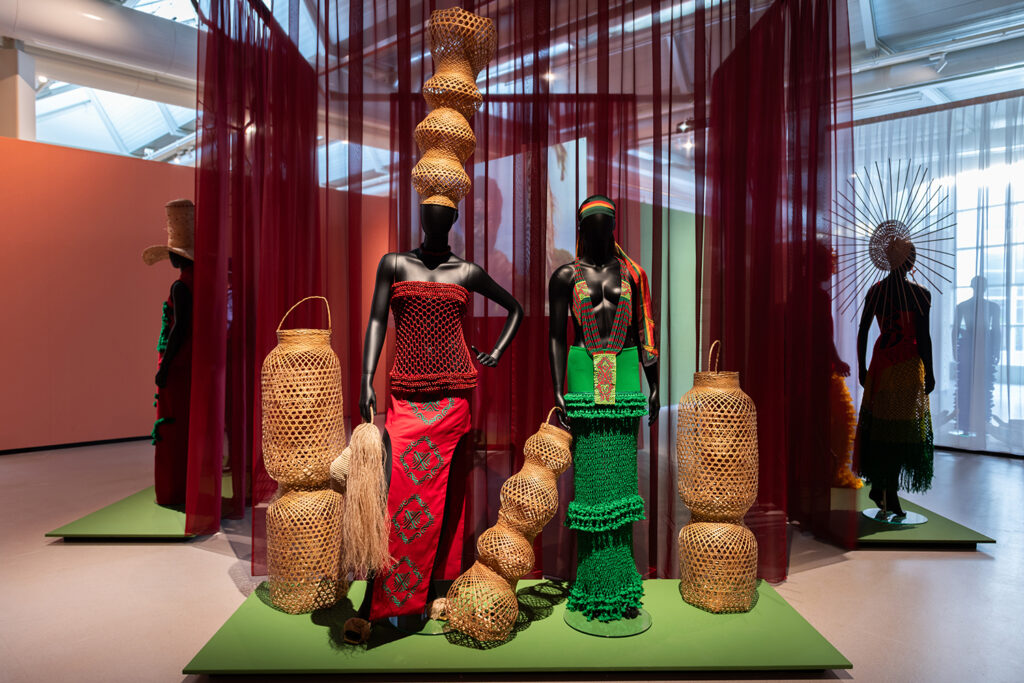Wi Sranan. Surinamese Art in Transition
An ode to 50 years of Surinamese independence

November 25, 2025 marks the 50th anniversary of Suriname’s independence. Museum Cobra in Amstelveen is marking this historic moment with a large-scale exhibition: Wi Sranan. Surinamese Art in Transition.
From November 8, 2025, to March 1, 2026, 24 artists and one artist collective present existing and new works depicting the struggle, transformation, and future of freedom. Through fashion, photography, paintings, installations, film, and performances artists show how stories from the past live on in the imagination of today—and how they continually redefine the meaning of freedom, with an eye to the future.
“The artists in Wi Sranan make tangible how traditions can transform, how identity is constantly reshaped, and how art creates space for dialogue and imagination. The exhibiton is a tribute to Suriname and an invitation to all of us to rethink community and the future,” says director Suzanne Wallinga.
Wi Sranan. Surinamese art in Transition is curated by guest curator Noukhey Forster, who is known for his work on inclusion and new narratives in art and fashion. The exhibition features work by Totomboti, Neil Fortune, Guillaume Lo A-Njoe, Sheila Janet Pinas, jahi quasim reeberg, Tessa Leuwsha, Marga Weimans, Angel-Rose Oedit Doebé, Meredith Joeroeja, Soeki Irodikromo, Dhiradj Ramsamoedj, Isan Corinde, Kenneth Flijders, Kurt Nahar, Maikel Deekman, patricia kaersenhout, Reilly do Rosario, Rinaldo Klas, Remy Jungerman, Sara Blokland, Sarojini Lewis, Sri Irodikromo, Xavier Robles de Medina, Marcel Pinas, and Iris Kensmil.
Freedom in motion
The theme of freedom is the common thread running through the exhibition. It ties in seamlessly with the spirit of Cobra, which once broke with academic rules and embraced the power of imagination and collaboration. At a time when debates about freedom of expression and the social role of art are more topical than ever, the artists from Wi Sranan pose urgent questions in a new, polyphonic light. Wallinga: “With Wi Sranan, which loosely translates as ‘Our Suriname,’ we offer our visitors a unique opportunity to discover Cobra and Surinamese art in a new light.”
The Wi Sranan exhibition ties in with the historical exchange between Cobra and Suriname. Cobra artists such as Corneille (1922–2010) were inspired by Surinamese Tembe and Maroon culture, while Surinamese artists such as Erwin de Vries (1929–2018), Soeki Irodikromo (1945–2020), and contemporary artist Guillaume Lo A-Njoe (1937) embraced Cobra’s experimental spirit. Whereas this generation engaged in dialogue with Cobra at the time, contemporary artists continue this tradition of imagination, each from their own perspective.
Diversity as a source of imagination
Suriname has a rich, layered history and a society with unprecedented cultural diversity. This diversity is reflected in the art: in references to heritage and traditions, but also in futuristic perspectives and radical imagination. In the exhibition, the artists each give their own voice to the story of Suriname: from memory and ritual to experiment and avant-garde.
Tembe art and Indigenous voices
A significant part of the exhibition is devoted to Maroon art, with a special focus on Tembe art, an art form from Maroon culture that expresses itself in both colorful paintings and refined wood carvings. It combines struggle, beauty, and cultural freedom. Surinamese Indigenous art also features prominently: the work of the first inhabitants of Suriname, which is rarely recognized as a fully-fledged art form, is proudly incorporated into the work of young artists. By showcasing these art forms, Museum Cobra not only wants to pay tribute, but also to stimulate a broader dialogue about heritage, identity, and the future.
New commissions
Thanks to intensive collaboration with artists, lenders, and institutions from Suriname and the Netherlands, Museum Cobra is able to present a diverse selection of contemporary Surinamese art. In addition to existing works, new commissions are also on display, in which collaborations with local indigenous artists play an important role.

Wi Sranan is made possible by: Gemeente Amstelveen, VriendenLoterij, Mondriaan Fonds, J. Safra Sarasin, Zadelhof Cultuur Fonds, Zabawas, Fonds 21, Nico Nap Foundation, KEIM, Business Cobra
